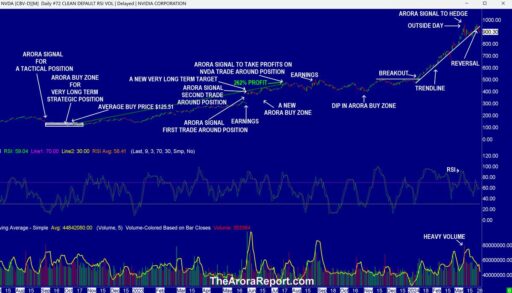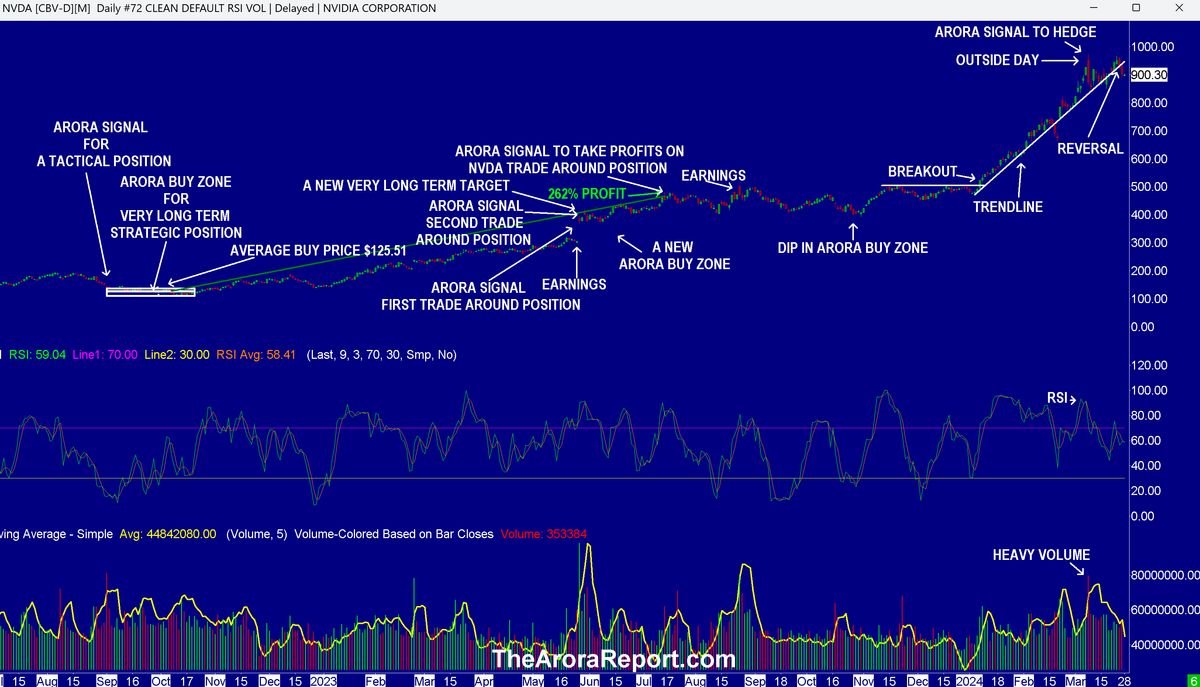The stock market is an ever-evolving landscape, with trends and patterns that can shift rapidly due to a myriad of factors. Understanding these dynamics is crucial for investors aiming to capitalize on the opportunities presented by the market’s fluctuations. This article delves into the latest trends in stock news, highlighting how investors are responding to market shifts and what strategies are being employed to navigate through the changing financial terrain.
Key Takeaways
- Recent ‘good’ inflation data has led to a positive market reaction, suggesting a potential easing of investor concerns over inflation’s impact on stock trends.
- Growth stocks, such as Meta and Microsoft, have shown resilience with a continued rally, indicating strong investor confidence in their potential.
- Technological advancements, particularly in AI and electric vehicles, are significantly influencing stock performance and investor interest.
- Investors are utilizing tools like IBD Digital and stock screeners to analyze market trends and generate daily trade ideas, emphasizing the importance of leveraging digital resources.
- Unusually heavy trading volume in certain stocks signals institutional buying or selling, which can be a critical indicator for investors looking to identify market winners and losers.
Understanding Market Dynamics

The Impact of Inflation Data on Stock Trends
Inflation data plays a pivotal role in shaping stock market trends, as it influences investor sentiment and monetary policy decisions. At its peak in June 2022, inflation over the previous 12-month period was more than 9%, reflecting a significant economic pressure point that has since been closely monitored by market participants.
Investors have been cautiously optimistic as recent ‘good’ inflation data suggests a potential easing of these pressures, leading to a positive response in stock futures. This optimism is evident in the growth sector, where companies like Meta and Microsoft are showing promising setups after a period of consolidation.
The anticipation of inflation reports continues to create a palpable tension in the markets, with investors seeking signs of a sustained downward trend in inflation that could signal a more stable economic environment.
Market reactions to inflation data can be summarized as follows:
- A higher than expected inflation rate typically leads to a decline in stock prices due to fears of aggressive interest rate hikes.
- Conversely, inflation data that aligns with or falls below expectations can result in a stock market rally.
- The core Personal Consumption Expenditures (PCE) index, excluding food and energy, is a key indicator watched by the Federal Reserve and can heavily influence their policy decisions.
Growth Stocks Rally: A Breakdown of Recent Movements
The recent rally in growth stocks has been a notable trend, with a shift in momentum that has caught the attention of many investors. What’s even more impressive is the evolution of the rally, particularly how it has built upon the gains of the previous year. The breadth of the market has been a key factor, with a range of sectors contributing to the upward movement.
The stock market rally showed breadth, with small caps leading the way to a 24-month high. Growth leaders like Nvidia took a break.
As we’ve seen, growth stocks paused last week, yet the overall market rally did not falter. This pause is seen as a consolidation phase, where stocks like Meta and Microsoft are setting up for potential moves. Monitoring the market’s health through breadth indicators in the coming months will be crucial, especially as investors continue to rotate into value stocks and other sectors.
Recent Market Dynamics
- Small caps reaching a 24-month high
- Growth leaders taking a breather
- Value stocks gaining investor interest
- Market breadth indicating overall health
Assessing the Role of Institutional Investors in Market Shifts
Institutional investors are the behemoths of the stock market, wielding significant influence over market trends and liquidity. Their strategic decisions can lead to substantial shifts in stock prices, often dictating the pace at which markets move. These entities, ranging from pension funds to mutual funds, are not just passive holders of securities; they actively shape corporate governance and can be the catalysts for major market movements.
Understanding the strategies of institutional investors is key for individual investors aiming to navigate the stock market’s complexities. The table below provides a snapshot of the recent activities by institutional investors in the secondary stock market:
| Sector | Buy/Sell Ratio | Average Volume Change |
|---|---|---|
| Technology | 2:1 | +15% |
| Healthcare | 1:1 | +5% |
| Energy | 1:3 | -10% |
The patterns of institutional investment can serve as a barometer for market sentiment, offering insights into potential future trends.
It’s important to note that while institutional investors provide liquidity and stability, their actions can also lead to increased volatility, especially during market downturns. Individual investors should consider the broader market implications of these large-scale trades and adjust their strategies accordingly.
Investment Strategies in a Shifting Landscape

Navigating Through Earnings Reports and Sector Outlooks
Investors must adeptly navigate the maze of earnings reports and sector outlooks to make informed decisions. Understanding the nuances of these reports can significantly impact investment strategies. Earnings seasons bring a flurry of information that can either confirm or challenge the prevailing market sentiment.
- Review historical earnings performance
- Analyze consensus estimates versus actual results
- Consider forward-looking statements and guidance
- Assess sector health and potential headwinds or tailwinds
In the midst of earnings season, it’s crucial to discern between short-term market reactions and long-term fundamental changes. This discernment can be the difference between capitalizing on opportunities and falling prey to market noise.
The table below provides a snapshot of key earnings indicators that investors should monitor:
| Indicator | Description |
|---|---|
| EPS | Earnings Per Share |
| Revenue | Total income from sales |
| Guidance | Future earnings projections |
| Beat/Miss | Comparison to analyst expectations |
By keeping a close eye on these indicators and understanding sector trends, investors can position their portfolios to better weather the volatility that earnings reports often bring.
Adapting to Economic Trends and Federal Reserve Policies
Investors are increasingly required to adapt their strategies in response to the economic indicators and the Federal Reserve’s monetary policies. The Fed’s decisions on interest rates and bond sales are pivotal in shaping market expectations and investment approaches. For instance, the March 2024 Fed meeting concluded with rates holding steady, signaling an uncertain path toward future rate cuts, which could have profound implications for investment strategies.
As economic reports are released, they become critical in determining market direction. Joe Kalish, Chief Global Macro Strategist at Ned Davis Research, emphasizes the heightened sensitivity of the market to these reports, especially concerning inflation progress. This sensitivity underscores the need for investors to stay informed and responsive to new data.
The anticipation of rate cuts, while not immediately necessary due to the resilience of the economy and companies, suggests potential benefits for consumers and certain market sectors. Falling rates could particularly bolster sectors like financials, real estate, and utilities.
Moreover, while the European Central Bank (ECB) is expected to initiate rate cuts ahead of the Fed, reflecting differing economic conditions, investors must consider the global context of monetary policies and their impact on market dynamics.
Determining Optimal Stock Market Exposure Levels
In the quest to balance potential gains with risk mitigation, investors often grapple with the question of how much of their portfolio should be allocated to stocks. The Stock Market Exposure system offers a guideline for investment levels that aim to optimize returns while minimizing risk, tailored to the current market climate.
| Market Condition | Suggested Exposure |
|---|---|
| Bullish Trend | 60-80% |
| Stable Growth | 40-60% |
| Uncertain Times | 20-40% |
| Bearish Outlook | 0-20% |
While no system can guarantee profits or fully protect against losses, adhering to a recommended exposure level can be a prudent step in risk management. It’s a dynamic approach that adjusts with market trends, aiming to capture gains during favorable conditions and shield from downturns during volatile periods.
It’s important to note that these recommendations are not absolute. Investors are encouraged to combine these guidelines with personal judgment and a comprehensive understanding of their individual financial situations. Diversification across various asset classes and sectors is also crucial, as it can help reduce the impact of market volatility on the portfolio.
Technological Advancements and Stock Performance

AI Stocks and the Future of Investing
Investors are increasingly turning their attention to the burgeoning field of artificial intelligence, recognizing the potential for substantial growth. AI stocks are not just about futuristic speculation; they represent real companies with tangible products and services. Companies that are already generating revenue from AI technologies, such as Microsoft and Nvidia, are particularly appealing to savvy investors. However, discerning which AI stocks are truly leveraging the technology for significant revenue streams can be a complex task.
The integration of AI into various industries is creating a new landscape for investment opportunities. As AI becomes more pervasive, the companies that are at the forefront of this technology are likely to experience increased demand for their products and services.
The following table highlights some key players in the AI market and their recent performance:
| Company | Sector | Recent Performance |
|---|---|---|
| Microsoft (MSFT) | Technology | Positive |
| Nvidia (NVDA) | Semiconductors | Positive |
| Alphabet (GOOGL) | Technology | Stable |
While the AI market is still evolving, investors are advised to keep a close eye on these stocks as they navigate through the complexities of the tech landscape.
The Surge of Electric Vehicle Stocks in the Market
The electric vehicle (EV) sector has seen a remarkable surge, with investors closely monitoring the performance of key players like Tesla (TSLA), Nio (NIO), and BYD (BYDDF). Despite a challenging first quarter for stocks broadly, EV companies continue to attract significant attention.
Recent data indicates a competitive landscape, with Tesla facing production adjustments and new entrants like Xiaomi’s SU7 garnering substantial pre-orders. Meanwhile, BYD is leading a price war that could reshape market dynamics.
The EV market’s rapid evolution is underscored by the sheer volume of orders and the aggressive pricing strategies adopted by emerging and established manufacturers alike.
Here’s a snapshot of recent stock performance in the EV space:
| Company | Change (%) | News Date |
|---|---|---|
| TSLA | 2.25% | 3/30/2024 |
| BYDDF | 1.99% | 3/30/2024 |
| NIO | – | – |
Investors are advised to stay informed on sector trends, production news, and sales data to make educated decisions in this rapidly shifting market.
How Cryptocurrency Adoption Influences Traditional Stocks
The integration of cryptocurrencies into the financial markets has been a transformative trend, with traditional stocks increasingly influenced by the digital asset space. The surge in Bitcoin and other cryptocurrencies has not only captured investor interest but has also led to the creation of new financial products, such as Bitcoin ETFs, which offer indirect exposure to the crypto market.
Short sellers are anticipating a potential downturn in crypto-linked stocks, despite the current rally. This skepticism is reflected in the nearly $11 billion bet against these stocks, indicating a significant expectation of market correction.
The adoption rates, market volatility, and integration methods of cryptocurrencies are pivotal in understanding their impact on investment portfolios.
The U.S. market has seen a notable influx of institutional interest in Bitcoin, which has played a crucial role in the cryptocurrency’s price resilience and, by extension, the performance of related stocks.
Spotlight on High-Performing Stocks

Stocks on the Move: Identifying Winners and Losers
In the ever-shifting landscape of the stock market, identifying which stocks are gaining traction and which are falling out of favor is crucial for investors. Stocks making significant price moves on unusually heavy volume often signal institutional buying or selling, providing insights into potential winners and losers.
- Up in Price: Stocks that are experiencing an increase in their share price.
- Down in Price: Stocks that are seeing a decrease in their share price.
Monitoring these movements is essential, as they can indicate the market’s reception of a company’s performance or the impact of broader economic trends.
When assessing stock performance, investors should consider various ratings such as Composite, EPS, and RS, which offer a comprehensive view of a stock’s strength. Additionally, understanding the percentage change in stock price can provide a clearer picture of market shifts.
Understanding Ratings: Composite, EPS, and RS Explained
Investors often seek to understand the relative performance of stocks in a quick glance. The Composite Rating, EPS Rating, and RS (Relative Strength) Rating are tools designed to do just that. They provide a snapshot of a company’s overall health and market performance compared to other stocks. For instance, a high Composite Rating indicates that a company is outperforming a significant percentage of the market.
When it comes to the EPS Rating, it zeroes in on a company’s earnings strength and growth potential. A robust EPS growth rate can signal future profitability and stock price appreciation. The RS Rating, on the other hand, measures a stock’s price performance over the last 12 months against all other stocks. It’s a momentum indicator that can help identify stocks that are on the rise before they make significant moves.
It’s essential to note that these ratings are not static and can change with market conditions and company performance updates. Investors should use them as part of a broader analysis.
Here’s a simplified breakdown of how stocks might be categorized based on these ratings:
| Rating Type | High Performer | Average | Low Performer |
|---|---|---|---|
| Composite | Top 5% | Middle | Bottom 10% |
| EPS | Above industry avg. | In line with industry | Below industry avg. |
| RS | Above 80 | 40-80 | Below 40 |
Understanding these ratings can help investors make more informed decisions by highlighting which companies are now outperforming 95% of all stocks, and which may require a closer look before investing.
The Significance of Unusually Heavy Trading Volume
Unusually heavy trading volume can be a critical indicator for investors, signaling significant market activity. When a stock experiences a surge in trading volume, it often points to institutional buying or selling, which can lead to substantial price movements. This is particularly noteworthy when a stock moves on volume that greatly exceeds its average.
- Up in Price
- Down in Price
Market analysts suggest that high volume movements can validate a stock’s price trend, providing a measure of conviction behind the price changes. For instance, a stock climbing on high volume may indicate strong buyer interest and a potential upward trend.
Monitoring trading volume can offer insights into market strength and investor sentiment.
Conversely, when prices fall on increasing volume, it may reflect widespread selling pressure. Keeping an eye on volume patterns alongside other indicators can enhance trading strategies and decision-making.
Investor Resources and Tools

Leveraging IBD Digital for Market Trend Analysis
Investors seeking to stay ahead in the stock market can greatly benefit from IBD Digital’s exclusive stock lists and analysis. With a focus on market trends, IBD Digital categorizes the market into three states: Confirmed Uptrend, Uptrend Under Pressure, and Market in Correction. Understanding these states is crucial for making informed decisions.
By tracking the general market direction, investors can align their strategies with the current market phase, enhancing their chances of success.
IBD Digital also offers a simple 3-Step Investing Routine to help maintain profitability and protection. This routine involves tracking market trends with The Big Picture, utilizing IBD Stock Lists, and employing Stock Checkup tools.
Here’s a quick glance at the market exposure levels that investors might consider based on IBD’s analysis:
| Market Exposure | Percentage Range |
|---|---|
| Very Low | 0-20% |
| Low | 20-40% |
| Moderate | 40-60% |
| High | 60-80% |
| Very High | 80-100% |
Subscribing to IBD Digital provides access to daily trade ideas, advanced algorithms, and expert analysis, which can be a game-changer for your investment strategy.
Utilizing Stock Screeners for Daily Trade Ideas
In the fast-paced world of stock trading, investors are always looking for tools to stay ahead of the curve. Stock screeners are indispensable for filtering through thousands of stocks to find those that meet specific criteria. With a variety of parameters such as market cap, earnings growth, and technical indicators, screeners can help pinpoint daily trade ideas that align with individual investment strategies.
For instance, a basic screener setup might include filters like:
- Market Capitalization: >$2 billion
- Earnings Per Share Growth: >10% year-over-year
- Price Above 50-day Moving Average
By setting up custom filters, investors can quickly identify potential investment opportunities and react to market changes with agility.
Moreover, many platforms offer pre-set screening options that highlight stocks with strong fundamentals or technical setups. These curated lists can serve as a starting point for further research or immediate action, depending on the investor’s confidence and risk tolerance.
The Benefits of Subscribing to Specialized Investment Newsletters
In the fast-paced world of stock trading, staying informed is key to success. Subscribing to specialized investment newsletters can provide a competitive edge by delivering timely insights and analysis directly to your inbox. These newsletters often cover a range of topics, from market trends to individual stock performance, and can be tailored to various investment styles and interests.
- Timely Insights: Receive up-to-date information on market dynamics.
- Expert Analysis: Benefit from professional interpretations of stock movements.
- Customization: Choose newsletters that align with your investment strategy.
- Convenience: Access valuable information without extensive research.
By integrating the insights from these newsletters into your investment strategy, you can make more informed decisions, potentially leading to better investment outcomes.
Whether you’re a seasoned investor or just starting out, investment newsletters can serve as a valuable resource. They not only save time by summarizing key information but also often highlight opportunities that may not be immediately obvious to the average investor.
Conclusion
As we navigate the ever-evolving landscape of the stock market, it’s clear that investors are keenly observing market shifts and adjusting their strategies accordingly. The recent ‘good’ inflation data has sparked a positive reaction, with futures rising and growth stocks like Meta and Microsoft gearing up for potential rallies. Despite occasional breaks in momentum, the resilience of the rally is noteworthy. Moreover, with the S&P 500 logging its best Q1 return since 2019 and stocks rebounding as the market eyes upcoming inflation tests, there’s an air of cautious optimism. Investors are advised to stay informed and consider the recommended exposure levels to balance capturing gains with minimizing risk. The market’s ability to grind higher amidst new highs suggests a blend of challenges and opportunities ahead. Staying attuned to daily market updates, earnings reports, and economic trends will be crucial for those looking to make informed decisions in this dynamic investment climate.
Frequently Asked Questions
How does inflation data impact stock market trends?
Inflation data can significantly influence stock market trends as it affects consumer purchasing power, company costs, and interest rates, which can lead to shifts in investor sentiment and stock valuations.
What are growth stocks and why are they rallying?
Growth stocks are shares of companies expected to grow at an above-average rate compared to other firms. They are rallying due to positive market conditions, technological advancements, and investor optimism about future earnings.
How do institutional investors affect market shifts?
Institutional investors, with their large volume trades and strategic decisions, can significantly influence market liquidity, stock prices, and overall market shifts, often leading to increased volatility.
Why is it important to adapt investment strategies to economic trends and Federal Reserve policies?
Adapting investment strategies to economic trends and Federal Reserve policies is crucial because these factors can affect market conditions, interest rates, and economic growth, thereby impacting investment returns.
What role do technological advancements play in stock performance?
Technological advancements can drive innovation, productivity, and growth, leading to increased investor interest and potentially higher stock performance, especially in sectors like AI, EVs, and cryptocurrencies.
How can investors use stock screeners and specialized investment newsletters to their advantage?
Investors can use stock screeners to filter stocks based on specific criteria, while specialized investment newsletters can provide expert insights, analysis, and trade ideas, helping investors make informed decisions.





